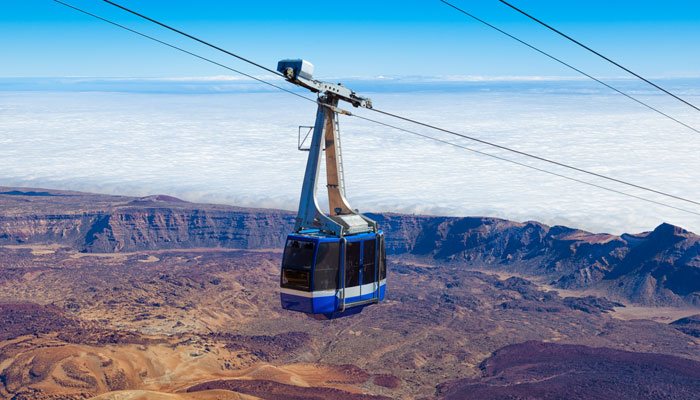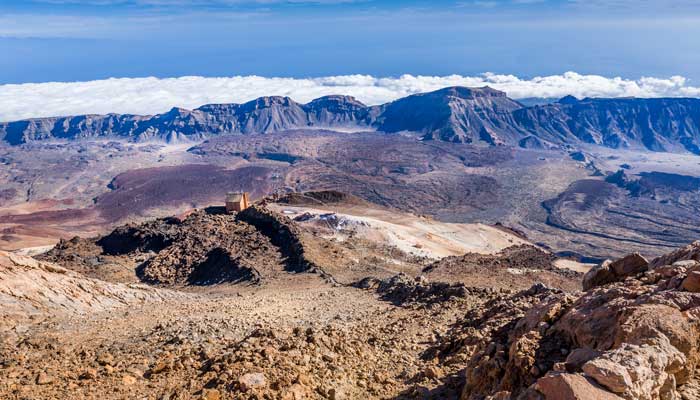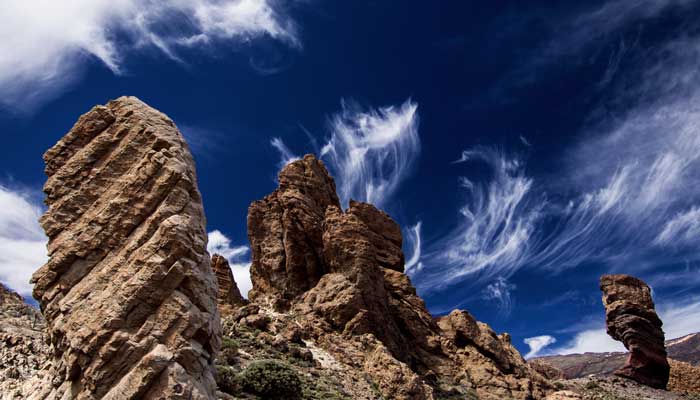Mount Teide Volcano Guide
Set in the centre of Tenerife, Teide National Park is a far cry from bustling beach resorts of the island's coast. This spectacular volcanic landscape, which covers an area just shy of 19,000 hectares and is sparsely populated, is home to Spain's highest peak - the active volcano of Mount Teide.

Travelling through the arid, undulating terrain imparts a sense of otherworldliness as large, jagged rock formations rise above sun-drenched scrubland. Mount Teide stands watch over all, 3,718 metres in height and emitting wisps of sulphurous vapour - a gentle reminder that this giant is still very much alive.
The Legend of Mount Tiede
Have you heard about the Legend of Mount Teide? Find out more about Tenerife's very own Olympus.
Ascending the Volcano

There are two ways to ascend the volcano: on foot and by cable car. The former is a challenging, five-hour trek, but well worth it for those who are fit and able. Undertaking the climb reveals a huge field of balls made from black obsidian lava, known as Los Huevos del Teide (the eggs of Teide) and, if an overnight stay at the Altavista mountain refuge is required, the clear, star-filled sky lays over the landscape like a sparkling canopy.
Take the cable car for a faster ascent - in just eight minutes, the car drops visitors a mere 200 metres from the summit, from where there is a steep walk to the top. The thin air is demanding on the body, but the reward more than makes up for a laborious climb.
Majestic Views

The first thing to note at Mount Teide's peak is the yellow and white sulphurous rocks, which are hot to the touch and, as they slope into the crater, create a strange, lunar-like scene. Turn to face outwards and the views across Tenerife and the other Canary Islands are nothing short of glorious.
On a clear day it's possible to see Gran Canaria in one direction, while in the other, La Palma, La Gomera, and El Hierro punctuate the clear blue of the Atlantic. Cloud cover is by no means a disappointment, however; Teide's summit rises above the level of the clouds, meaning visitors are bathed in bright sunlight as they look down upon the breath-taking 'sea of clouds' that encircles the volcano.
The Practicalities

For the journey to Mount Teide, sunblock and water are strongly recommended as the temperatures can reach as high as 40°C in summer. (Check out our guide to weather in Tenerife for more info.) A sugary snack will also help keep energy levels up during the climb, and a sunhat or sunglasses will shield eyes from the sun's glare on the surrounding rocks. Sensible footwear is also highly recommended.
A permit is needed for the final part of the journey to the summit and can be obtained from the national park office in Santa Cruz de Tenerife. Buses to Teide leave from Puerto de la Cruz (number 348) and Playa de la Americas (342) at 9.15am, and leave the visitor centre at Teide at 4pm. The cable car is €25 and is subject to interruptions on windy days.
Up Next: Top 5 hidden gems in Tenerife

Need some help booking all your holiday extras? Want to talk to someone about other options at the airport? We want to help you travel hassle-free! At the moment the best way to get help with a booking is online, by visiting our help and support page.We're here to help.




